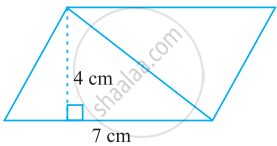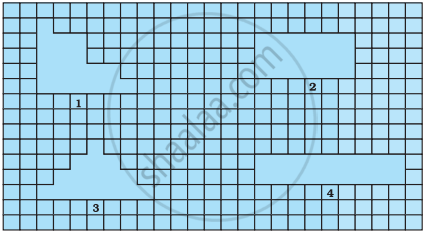Advertisements
Advertisements
प्रश्न
Find the height of the parallelogram whose base is four times the height and whose area is 576 sq.cm
उत्तर
Let the height be ‘A’ and base be ‘h’ units
Given b = 4 × h
Area of the parallelogram = 576 sq.cm
b × h = 576
4h × h = 576
h × h = `576/4` = 144
h × h = 12 × 12
h = 12 cm
Height = 12 cm, base = 4 × 12 = 48 cm
APPEARS IN
संबंधित प्रश्न
Find the area of the following parallelogram:

If base of a parallelogram is 18 cm and its height is 11 cm, find its area.
A parallelogram has sides of 15 cm and 12 cm; if the distance between the 15 cm sides is 6 cm; find the distance between 12 cm sides.
The two sides of the parallelogram ABCD are 6 cm and 4 cm. The height corresponding to the base CD is 3 cm.
Find the
(i) area of the parallelogram.
(ii) the height corresponding to the base AD.

A ground is in the shape of parallelogram. The height of the parallelogram is 14 metres and the corresponding base is 8 metres longer than its height. Find the cost of levelling the ground at the rate of ₹ 15 per sq.m
What happens to the area of the parallelogram if the base is increased 2 times and the height is halved?
A square and a parallelogram have the same area. If the side of the square is 48 m and the height of the parallelogram is 18 m. Find the length of the base of the parallelogram
Observe the shapes 1, 2, 3 and 4 in the figures. Which of the following statements is not correct?

To find area, any side of a parallelogram can be chosen as ______ of the parallelogram.
If perimeter of two parallelograms are equal, then their areas are also equal.
